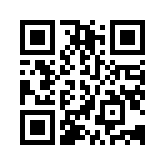Should you use red light LED therapy?
When patients are asking me about skin care regimens and anti-aging treatments, red light has been a common question lately. “How about red light? Is that a good idea?”
The short answer is that there is not a ton of really great science about red light treatment as a stand-alone treatment. So, as a science girl I’m always hesitant to recommend patients spend their valuable time and money on something that doesn’t have great scientific evidence. I’ll break it down quickly and then add some real science.
Should you buy or use an at-home LED device?
YES, IF you have extra time every day. Many at home masks require 10-15 minute daily treatments. Other handheld devices require that you treat each area for 3 minutes at a time, which could take up to 30 minutes to treat the whole face.
YES, IF you have extra money. Because it is hard to pick a device and know that it will work. At a minimum, these devices require 8 weeks of daily use at about $1-5 per day.
YES, IF you have no other medical option for treating acne or skin aging or are averse to using traditional medicine.
NO, IF YOU DON’T ANSWER YES TO ALL OF THE ABOVE.
When talking to patients I remind them that I own a red light and could use it as much as I want, but I rarely do. Why? I can’t answer YES to having extra time every day.
So what is “red light”?
Red light is generated by Light Emitting Diode (LED) lights. Over the past ten years, there has been a surge of LED light therapy treatment options because LED light is inexpensive to produce, purchase, use, and maintain compared to laser light. LED is also safe and easy to use.
LED light is available in so many forms and is offered as part of spa facials and at home therapy in addition to in-office professional treatments. LED light is available in masks, wands, and even in a tanning bed like device.
The effect on the skin varies depending on the color or wavelength of light, the intensity or power of the lights, and the length and frequency of treatments.
Color or wavelength of light: In the rainbow spectrum of visible light, different colors of light are referred to scientifically as the wavelength of light. The visible light spectrum includes many different colors and wavelengths of light and those different types of light have varying penetration into and effects on the skin.
In dermatology, we primarily use two types of LED light. Blue light kills acne bacteria. Red light reduces inflammation and stimulates collagen and elastin. There are also reports that amber light may induce collagen and elastin growth. In our office, we use red and blue light as part of a procedure called photodynamic therapy which treats acne, rosacea, sun damage, and precancerous areas.
Intensity or power of the light: The power or intensity of the lights can be predicted by “lux”. Lux generally is determined by the number of LED lights in a given area. For instance, our Poly Pro Red light in the office contains 1820 LED lights in 1123 cm2. This provides a lux of 52 J/cm2. I spent a lot of time looking at these lights and their specs online. It is very difficult to compare them. Most devices list the number of lights and the size of the illuminated area. For in-office treatments such as photodynamic therapy, I have heard experts reference that the light needs to be at least 50 lux. However, there are no standardized studies on the intensity of light required to provide a cosmetic effect.
Length and Frequency of treatments: Again, when attempting to compare these devices, they all differ greatly. The length of treatment can vary depending on the size of the panel or wand. If the surface area emitting the lights is small, it will require increased treatment times. For handheld devices, this can be time consuming and tiresome. Our office Poly Pro light has a recommended treatment time of 15-20 minutes.
Should you have in-office treatments with an LED Device? YES, IF part of a medical or well-proven protocol. Most well-proven protocols with LED lights are using blue light to treat acne and blue and red light as part of photodynamic therapy. YES, IF it is a low cost add on to a facial. LED light therapy is relaxing and rejuvenating and can give a temporary glow that augments a facial or kills bacteria for those with acne.
How are we using LED therapy at Appalachian Spring Dermatology? For over ten years, we have offered BLU-U and blue LED light therapy for acne and photodynamic therapy.
Over the years, we have converted most of our PDT patients to Red LED because red light penetrates deeper in the skin than blue light. The LED panel can also conform better to the body surface area and allow us to treat broader areas. We do still offer BLU-U and Blue LED for stand-alone acne therapy which can be done in the office 2-3 times per week. We also offer blue and red light as a low cost add on to our facials in the office.
Have you tried an at-home LED light? I’d love to hear which one, how it worked and whether it was worth it? Let us know in the comments or on social media.
“If you’re still wondering about red light. Take it from the experts at Cleveland Clinic”
– https://my.clevelandclinic.org/health/articles/22114-red-light-therapy
